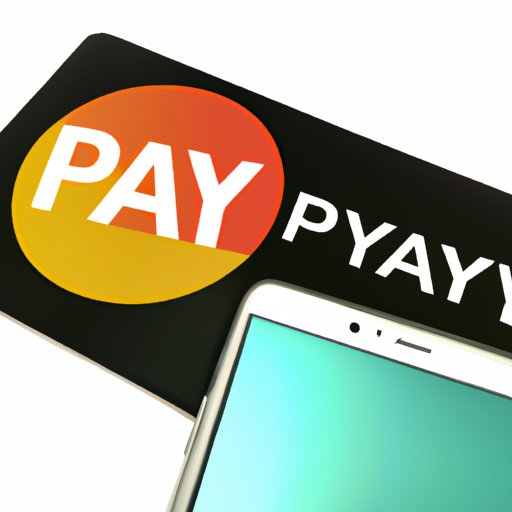
Introduction
PayPal has become one of the most popular online payment platforms in recent years. It allows individuals and businesses to send and receive money from anywhere in the world. In this comprehensive guide, we will explore how to receive money from PayPal, the pros and cons of using the platform, tips and tricks for maximizing earnings, and alternative payment methods.
Getting Paid with PayPal: A Comprehensive Guide for Beginners
First things first: before you can receive money from PayPal, you need to create an account. Once you have set up your account, you can start receiving payments.
If you are receiving money from friends and family, they can send you money through your PayPal account using only your email address or mobile number. All you need to do is log in to your PayPal account and click on the “Request Money” button. Enter the amount you want to receive and click “Next.” From there, you can select the person you want to request money from and add a message to the request.
If you are receiving payments for goods or services, you will need to take some additional steps. First, you will need to create a business account. Next, you will need to provide your customers with your PayPal email address or a button on your website that directs them to pay through your PayPal account. When customers pay, the money will be deposited directly into your PayPal account, and you will receive a notification.
If you’ve received money, it’s important to verify the payment and ensure that it appears in your PayPal account as expected. You can do this by checking your account balance and transaction history.
Lastly, you can connect your PayPal account to your bank account or debit card to withdraw money or transfer funds between accounts.
The Pros and Cons of Using PayPal to Receive Payments
While PayPal is a popular choice for receiving payments, it does come with both advantages and disadvantages.
One of the advantages of PayPal is that it is widely recognized and accepted all over the world. Additionally, the platform offers a high level of security and protection against fraudulent activities.
On the downside, PayPal charges fees for its services that can add up quickly. Also, users may experience payment delays or account limitations, which can be frustrating. Finally, while the user experience is generally positive, some individuals have reported difficulty navigating the platform.
Maximizing Your PayPal Earnings: Tips and Tricks for Freelancers and Small Business Owners
To maximize your earnings through PayPal, you can optimize your account, negotiate fees, and use PayPal in combination with other payment platforms or e-commerce tools.
First, make sure your PayPal account is optimized to receive the type of payments you need for your business. This may involve adding additional bank accounts or tweaking your settings. Next, consider negotiating fees with PayPal to save money on transaction fees.
You can also use PayPal in combination with other payment platforms or e-commerce tools to increase your earning potential. For example, you can use PayPal as one of several payment options on your website or e-commerce store.
Making the Most of PayPal’s Features: A User’s Guide
In addition to basic payment processing, PayPal offers a variety of other features that can help you manage your payments and earnings.
One of these features is invoicing, which allows you to create customized invoices for your clients. You can also set up recurring payments for services or products that you offer on a regular basis, such as monthly subscriptions.
If you’re worried about clients forgetting to pay, you can set up payment reminders that will automatically remind them to make payments. Additionally, PayPal allows users to easily convert currencies, making it an excellent choice for individuals and businesses that deal in multiple currencies.
Best practices for managing your PayPal account include regularly checking your account balance and transaction history and keeping track of your fees. Additionally, it’s important to avoid common pitfalls, such as falling for phishing scams or sending money to unverified users.
Alternative Ways to Receive Online Payments Besides PayPal
If you’re looking for alternatives to PayPal, there are several other payment platforms to consider.
Venmo, for example, is a popular choice among younger users, while Stripe and Square are more commonly used by small businesses. Zelle is another up-and-coming payment platform that is designed to be easy to use and secure.
When considering alternative payment platforms, it’s important to compare features and fees to those offered by PayPal to ensure that you make the best choice for your needs and budget.
How to Troubleshoot Common Issues When Receiving Payments on PayPal
Despite its many benefits, PayPal users may encounter issues when receiving payments. Some common issues include delayed payments, disputed transactions, and account limitations.
To troubleshoot these issues, PayPal users should first check their account balance and transaction history to ensure that all payments are being processed correctly. If there is an issue, users should contact PayPal’s customer service for additional support.
Conclusion
Receiving money through PayPal is a convenient and secure way to handle online payments. By setting up your account properly and taking advantage of all the features and tools available, you can maximize your earnings and avoid common pitfalls. Whether you choose PayPal or another payment platform, make sure to compare fees and features to get the best value for your money.





